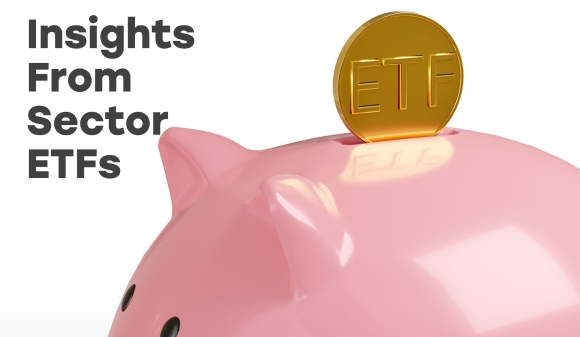Insights From ETFs: Rules of Thumb to follow for Tax Efficiency

 Taxes can be complicated, and withholding taxes on Exchange-Traded Funds (ETF) are no exception. In the past, we have discussed how to be tax-efficient with ETFs using different investment accounts and it is a topic that comes up quite often in our Q&A service at 5i Research. Tax efficiency with ETFs and stocks continues to be (and may always be) a confusing topic for investors. So, we thought it would be helpful to summarize the most frequently asked questions about tax efficiency by outlining a few rules of thumb to follow for tax-efficiency that matter most with ETFs. For this issue, we will focus on non-registered accounts and then cover registered accounts in future articles.
Taxes can be complicated, and withholding taxes on Exchange-Traded Funds (ETF) are no exception. In the past, we have discussed how to be tax-efficient with ETFs using different investment accounts and it is a topic that comes up quite often in our Q&A service at 5i Research. Tax efficiency with ETFs and stocks continues to be (and may always be) a confusing topic for investors. So, we thought it would be helpful to summarize the most frequently asked questions about tax efficiency by outlining a few rules of thumb to follow for tax-efficiency that matter most with ETFs. For this issue, we will focus on non-registered accounts and then cover registered accounts in future articles.
Simplifying the Issue: Withholding Taxes on Foreign Dividends
Most of the time, being tax-efficient comes down to paying attention to how you receive foreign dividends. Capital gains are not an issue and are taxed as usual for Canadians, even for foreign exposure. Therefore, it becomes more of a technical issue of where an ETF is listed and how it gets its exposure to avoid unnecessary taxes on dividends.
Here are some rules of thumb for foreign equity exposure:
U.S. exposure:
- Non-registered account: There is no difference between whether the ETF is Canadian-listed or U.S.-listed or how that ETF gets exposure. Withholding taxes may be partially recoverable.
- Registered Retirement Savings Plan (RRSP):
- The best place to earn US dividends as there are no foreign withholding taxes.
- In a Tax Free Savings Plan (TFSA): Not ideal for US dividends. Withholding taxes always apply and are never recoverable.
International Exposure:
This is a bit more complicated, but to simplify:
- Non-registered account: Canadian-listed ETFs that hold international securities are ideal as there is only one layer of withholding tax, some of which can be recovered. We like ETFs like BMO MSCI Emerging Markets Index ETF (ZEM) and iShares Core MSCI EAFE IMI Index ETF (XEF) for this. However, Canadian-listed ETFs that get exposure through a U.S.-listed ETF, or owning a U.S.-listed ETF directly result in an extra layer of U.S. withholding tax (which can be recovered). Still, it is less tax-efficient because the international dividend tax would not be recoverable.
- RRSP & TFSAs: Withholding taxes are not recoverable.
Canadian Equity Exposure:
Business as usual.
Since the common complications only occur when we are trying to get foreign exposure, this means that with Canadian equities and fixed-income, the issue of withholding tax is not present and all the standard rules you and I know about taxes on investment income apply. In the case of a nonregistered account, tax efficiency with Canadian equities means taking advantage of tax-loss selling to offset capital gains and dividend tax credits on eligible Canadian companies (as you would typically do). Of course, Canadian dividends within RRSPs and TFSAs are not taxed. Overall, the ëright answerí is less apparent with Canadian equities as it primarily depends on oneís strategy. Generally speaking, we would vouch for maximizing tax-sheltered accounts for long-term stable investments and reserve more high-risk investments for non-registered accounts to capitalize on the benefits of tax-loss selling.
Discount bonds For Fixed-Income in Non-Registered Accounts
Discount bonds are uniquely tax-efficient in a non-registered account compared to conventional premium bonds, created by a combination of capital gains (which are taxed more favourably) and lower interest income (less income taxed at a high rate). Overall, it can make more sense for an investor to have premium bonds in a tax-sheltered account, and a tilt toward discount bonds in a non-registered account for more tax efficiency from a total return perspective.
Premium bonds for TFSAs and RRSP
TFSAs and RRSPs are a great place to hold high-interest income products because of the high tax rate normally applied. The larger the difference in tax savings in a tax-sheltered account compared to a non-registered account, the more where tax-sheltered accounts show more value from a tax-efficiency perspective.
Where to focus your efforts:
High-paying foreign dividends
We come back to foreign dividends as this is most likely where we think the difference in return is made for most investors, especially given the importance of being geographically diversified outside of Canada. If an ETF pays a low dividend, then the withholding tax burden is generally not significant. In this case, we would argue tax efficiency (i.e. how the ETF gets exposure) is not very important. However, if the ETF pays a high dividend, then tax efficiency increases in importance, especially if the investor relies on that dividend income. For example, if an ETF with exposure to Chinese dividend stocks pays a four per cent yield and the withholding tax rate is 12%, then that yield effectively becomes 3.5% after withholding taxes. This cannot be recovered if held through a U.S.-listed, which adds another 15% withholding taxes. The yield then comes down closer to three per cent assuming one does not apply for a partial foreign tax credit. We like to check the yield percentage on a fund whenever we are evaluating the importance of considering tax efficiency.
Asset allocation comes first!
We have said this before and we cannot emphasize it enough: while we may provide tips on which ETFs or asset classes are ideal in each account, tax efficiency remains a secondary priority compared to making sure investors have an asset allocation that is right for them. We believe proper asset allocation based on time horizon and risk tolerance is the most important factor for long-term returns. For example, a younger investor focused on growth does not need to own a U.S. dividend ETF in their RRSP if the right focus for them is growth. Nonetheless, tax efficiency does give returns a bit of a boost, especially if compounded over time. Like everything else in investing, it is also about finding the right balance.
Disclosure: Authors, directors, partners and/or officers of 5i Research have a financial or other interest in XIT and ZRE.

